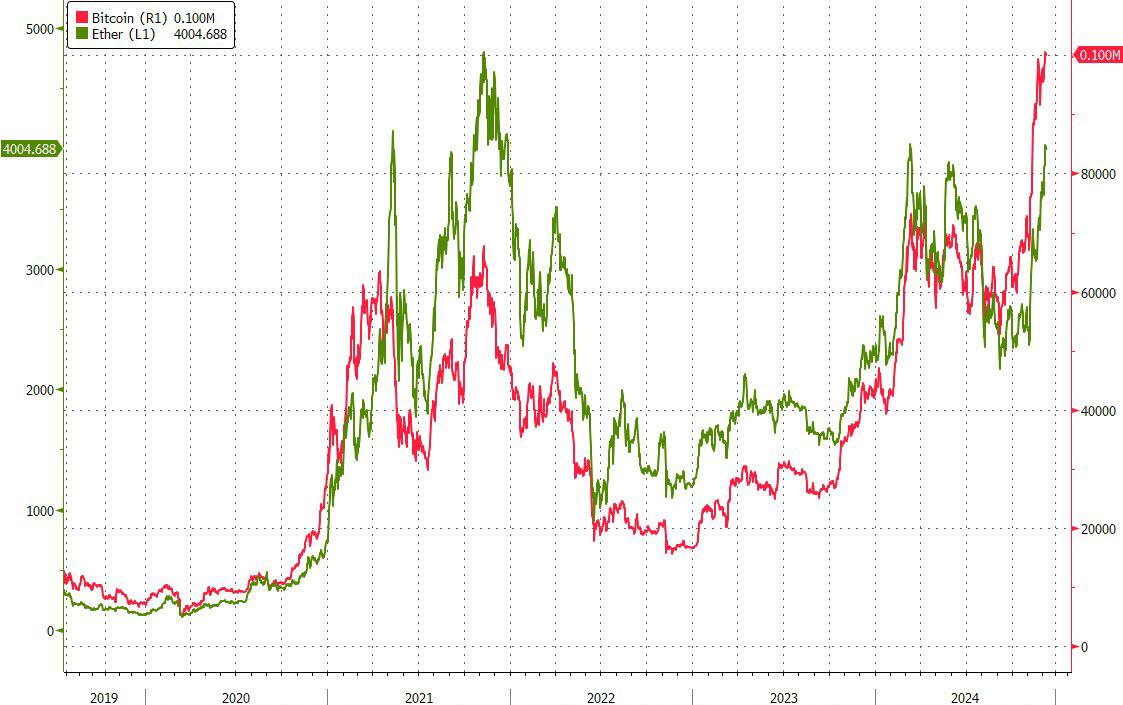By Eric Peters, CIO of One River Asset Management via Zero Hedge
People who make the most money are builders. Creating something new out of nothing, zero-to-one, is the hardest thing there is to do. So, society rewards those who do it best. There are all sorts of builders of course. And the most highly compensated are those who build things that no one has ever dreamt of, or perhaps not ever thought possible. Things which the builder had to imagine would someday be in high demand if only it could be brought to market. Henry Ford dreamt of a Model T. Steve Jobs imagined an iPhone. Musk aspires to Mars.
-
The Importance of Prayer: How a Christian Gold Company Stands Out by Defending Americans’ Retirement
Investors make less than builders because investing is easier, and moving money provides less value to society. There are all sorts of investors. Naturally, the highest paid are builders of investment firms. Griffin. Schwartzman. Dalio. Buffet’s extreme wealth is an outlier, but he’s been building Berkshire since 1965, compounding longer than any living entrepreneur. Investors generally make money like builders do. Some invest in outcomes no one thought possible. Most buy things they imagine will soon be in high demand.
The West confiscated $300bln of Russian assets in the days following its Feb 2022 Ukraine invasion. It didn’t take a wild imagination to picture a world where every sovereign nation that had stored its national wealth in assets controlled by western nations would seek an alternative. Gold seemed a good bet. But Powell started his historic rate hike cycle in March of 2022, which pushed the gold price down 20% – investing may be easier than building, but that doesn’t mean it’s easy. Buyers prevailed in time, and gold is now 25% higher than pre-invasion.
Investors could have bought Bitcoin instead of gold. Its price fell from $40k pre-invasion to $16k at the FTX lows and now trades $100k. Someone is clearly buying. And like many reflexive bull markets, higher prices create more positives. Bitcoin has quite clearly come to be recognized as an alternative to gold and has deepened what is now the most secure network ever built by humans. Ethereum performance has improved by orders of magnitude, growing faster, cheaper, more secure, versatile. Through the vicious cycle, crypto builders kept building.
The election marked a shift in US policy away from outward hostility toward the crypto industry. It took little imagination to picture a world where countless uninvested individuals and institutions would finally recognize the asset class and include it in their portfolios. Markets repriced accordingly. But it is also not so hard to imagine other profoundly different futures which as recently as five weeks ago most investors barely considered. This new future will unfold with these technologies now able to really scale. And this curve will steepen.
Every major global financial institution must now recognize that its entire trading, settlement, custody and risk infrastructure will likely shift to blockchain rails in the decade to come. Every bank, broker, custodian, exchange, asset manager, and payments provider must imagine a future where its business will be rebuilt on a new platform. They’ll either do it themselves, find an infrastructure partner, or lose to a competitor. It’s not hard to imagine a world where demand for crypto builders and infrastructure providers/partners will be extraordinary.



